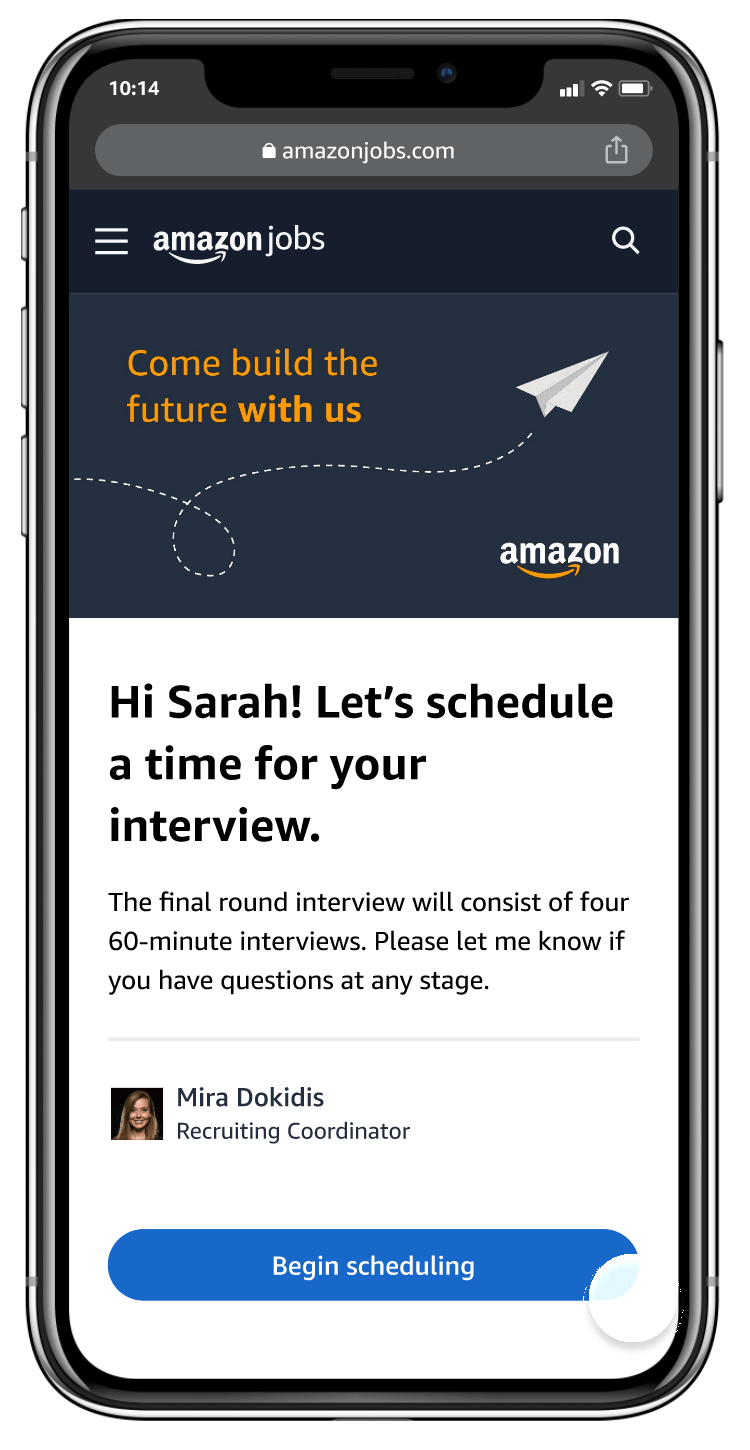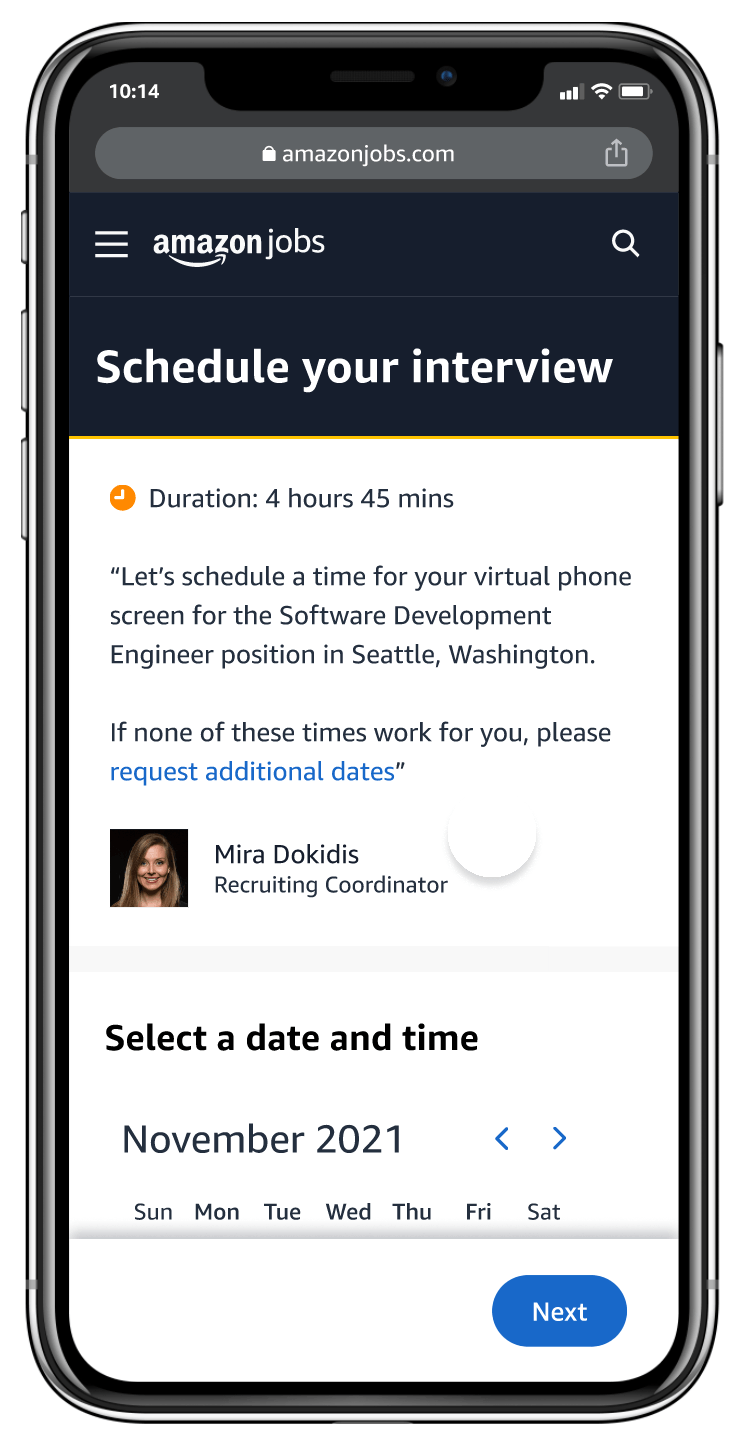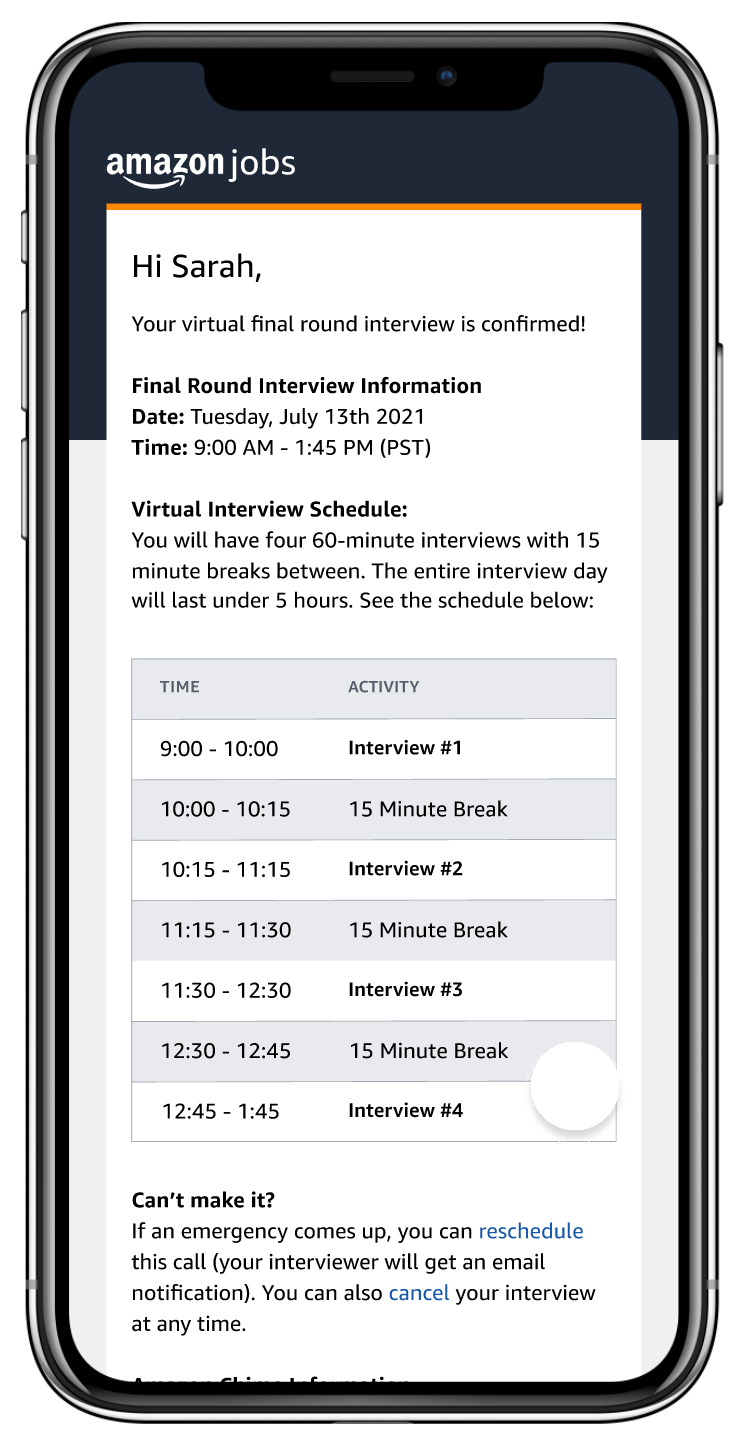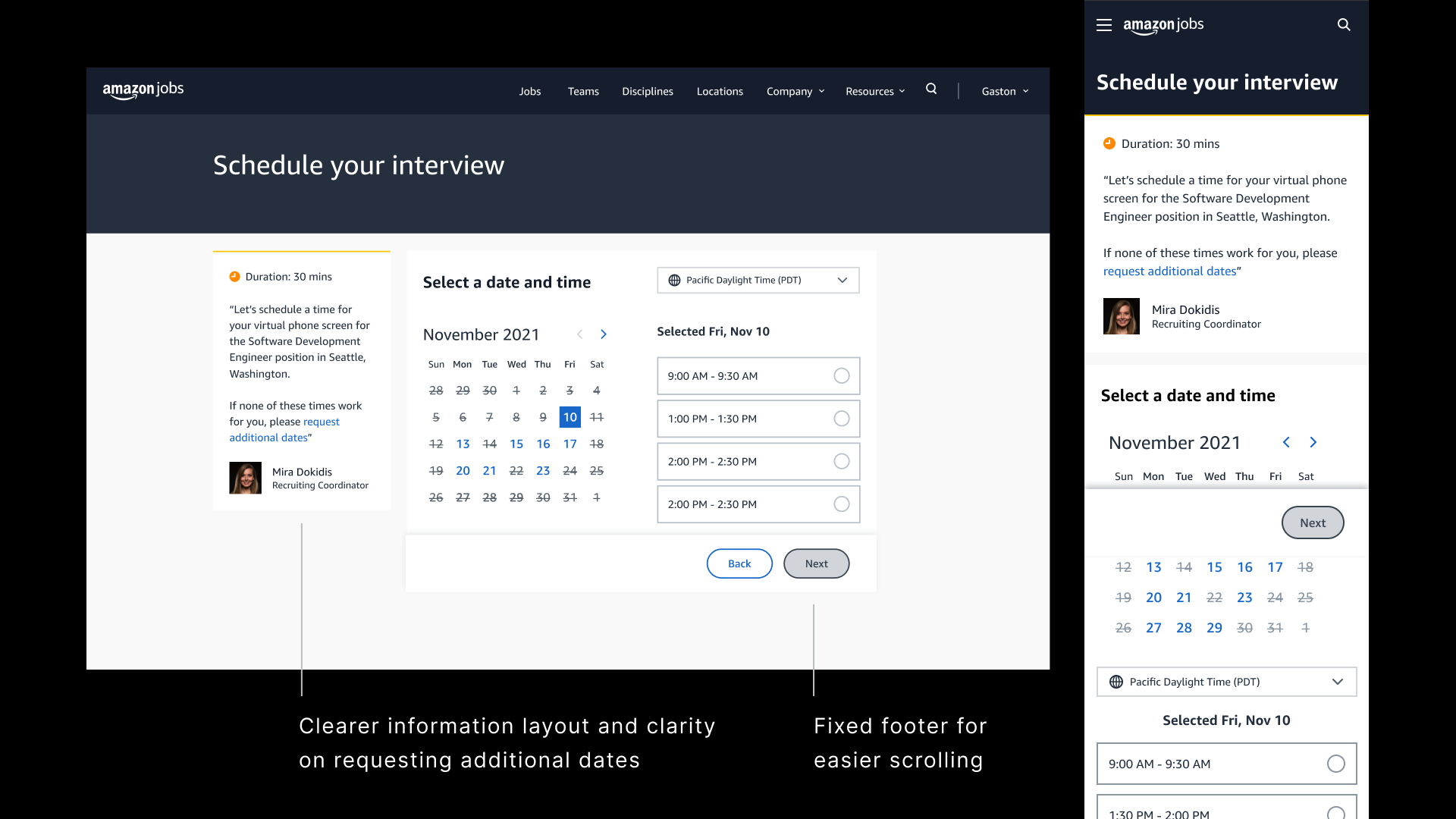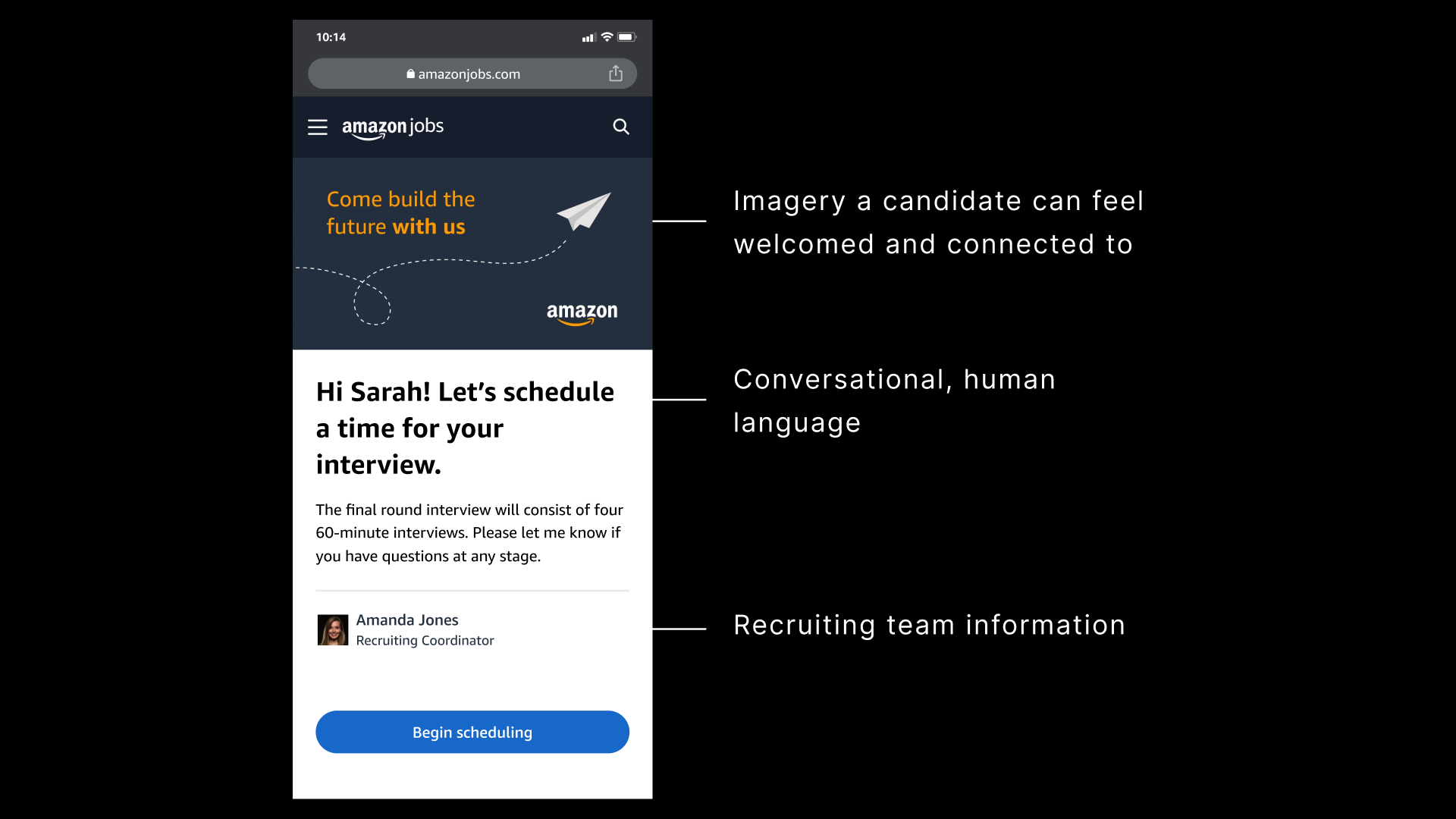
BACKGROUNDCurrently, interview scheduling is done in a series of time-consuming emails back and forth between the recruiting team and candidates
My main project was to create the end-to-end design for an interview self-scheduling tool. This tool would eliminate burdens on recruiters and give candidates more control during the recruiting process. As someone that had recently gone through this process, it was extremely rewarding to reimagine the experience for future candidates
PROJECT VISIONEmpower candidates
Candidates should feel in control of their interview process
Support all use cases
Designs should be able to support all types of scheduling done on mobile and web
OverviewEmpowering candidates during the recruiting process
During the summer, I had the opportunity to intern with the Recruiting Engine UX team to improve the Amazon hiring experience.
TimelineSummer 2021 — 3 months
TEAMDesign mentor, UXR, UX writer, PM, engineers
ROLEUX Design Intern
SOLUTION WALKTHROUGHIt all starts with an email
Candidates can access the scheduling tool from an automated email asking them to select an interview time
Schedule on your own terms
No more back and forth emails with recruiters – now scheduling can be done in a matter of minutes
Creating a stress-free scheduling experience
We know scheduling interviews can be a nerve-wracking process.
Extra precautions are added to make sure no mistakes are made – exact times and time zones are listed, and a confirmation screen lets you doublecheck you selected the desired time
Scheduling doesn’t always go perfectly. How can we support other use cases?
If none of the listed interview slots work for you, additional availability can be requested
Request availability
Sometimes emergencies or changes in priorities can occur. With sufficient time and interviewer availability, interviews can be rescheduled
Reschedule your interview
Cancel your interview
If you are no longer interested in interviewing with Amazon, you can cancel your interview right away
Now, jumping into the design process…
design EXPLORATIONSOne of the main challenges with this project was deciding on a design for interview scheduling
The design needed to work well for shorter phone screens as well as longer onsites.
It was still up in the air how many slots candidates would be shown to choose from. To make sure my designs would support realistic use cases, I relied on knowledge from recruiting coordinators on how they were currently scheduling interviews to base my designs off of
USER TESTINGAfter narrowing down to two possible scheduling designs, I used UserTesting to test the flow and designs with 12 participants
11/12 participants rated the tool very easy to use
“...Doing [scheduling] as a tool allows me to actually choose my own schedule without the pressure of emailing back and forth ...
I’m the one that’s in control of how to schedule my interview, so it makes me feel more empowered”
ITERATIONS BASED ON USER TESTINGUserTesting helped me validate the flow and concept for a self-scheduling tool. I decided to move forward with the calendar design because of its flexibility for scheduling farther-out interviews. Since the calendar was also already an existing component, it would also be easier for engineers to implement
The revised version emphasizes the time and takes into consideration mobile and desktop scrolling
DESIGN DETAILSAs I sorted through feedback from surveys on the recruiting process, one suggestion kept reemerging
“A greater personal touch throughout the process would help me feel more valued by the company”
Automating the scheduling process would be taking away another human touchpoint.
After speaking with my PM, we agreed that there was an opportunity here to create a design that felt human and welcoming. I created a welcome screen that would feel like the candidate was speaking with a real person
OUTCOMERecent changes to recruiting goals have pushed this project further back the roadmap
However, my mentor ended up working on a very similar scheduling project for automated recruiter calls (ARC) and was able to use my work for it. ARC launched in 2022 with great reviews from both recruiters and candidates
LEARNINGSCommunicate early and often
This project was the first time I was working within an established, complex ecosystem. There were multiple processes, organizations, and stakeholders that I needed to take into consideration. It was important for me to understand what was possible from the recruiting side in order to design the best overall scheduling experience. I learned to reach out to various domain experts and dig through internal documentation in order to thoroughly understand how to design the best experience for candidates.
If I had more time, I would have wanted to spend more time understanding how self-scheduling interviews and offering additional availability and rescheduling options could affect the way candidates choose interview times.
Be intentional about content design
I realized how important it was to get the wording exactly right so candidates could clearly understand what needed to be done. With the help of a UX Writer, I was able to get my first experience writing copy for my project to reflect Amazon’s human, helpful tone.
Make design decisions with confidence
It was both exciting and also intimidating to work with so many talented designers during my internship. With the help of my mentor and managers, I was able to gain confidence in my design decisions and ambiguous problem spaces. Thank you to Pengpeng Yu, Kristy Streefkerk, Andy Jacobson, and all of the Recruiting UX team for your support this summer!


